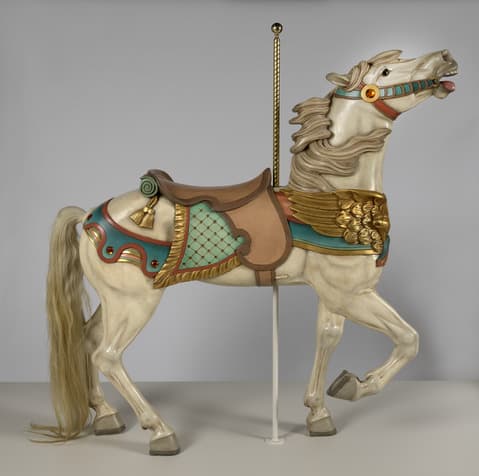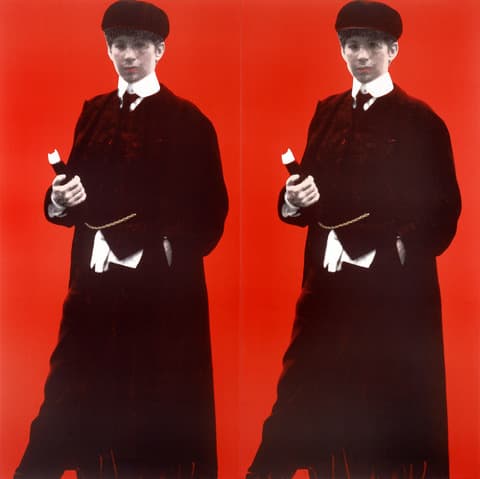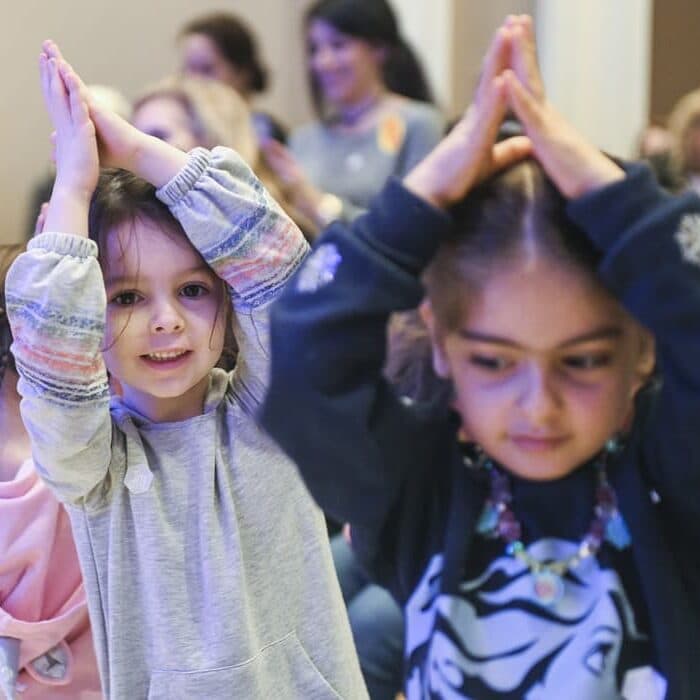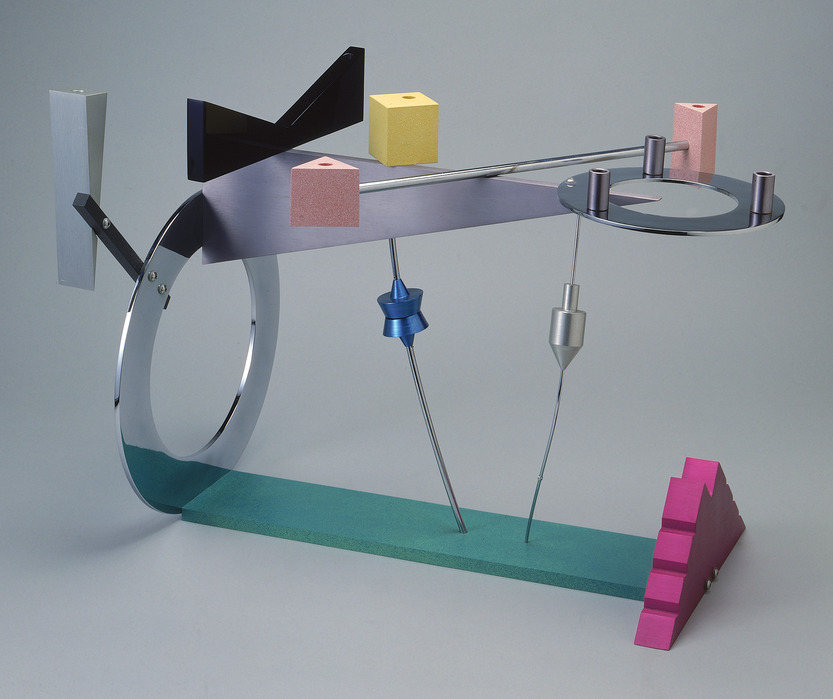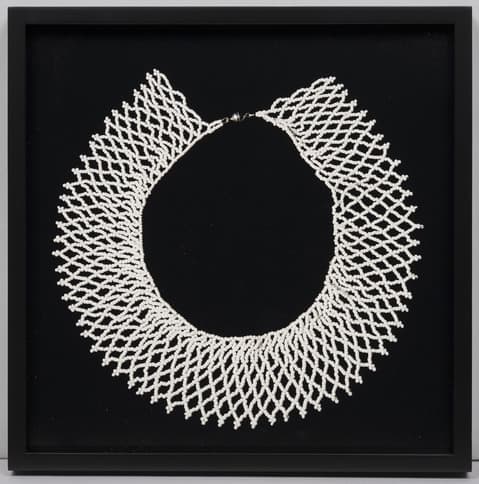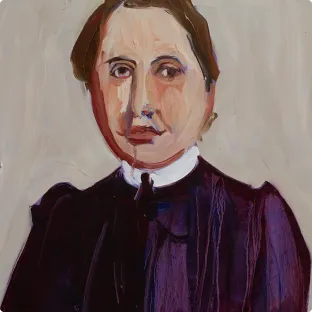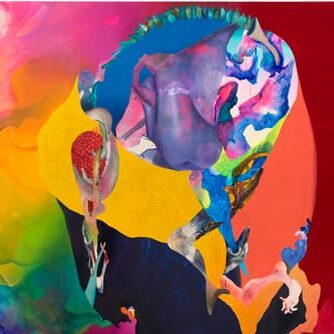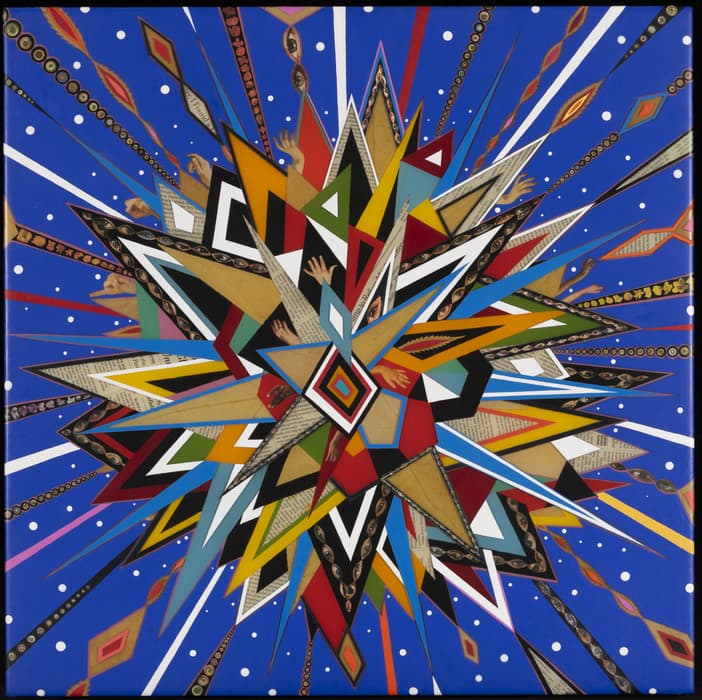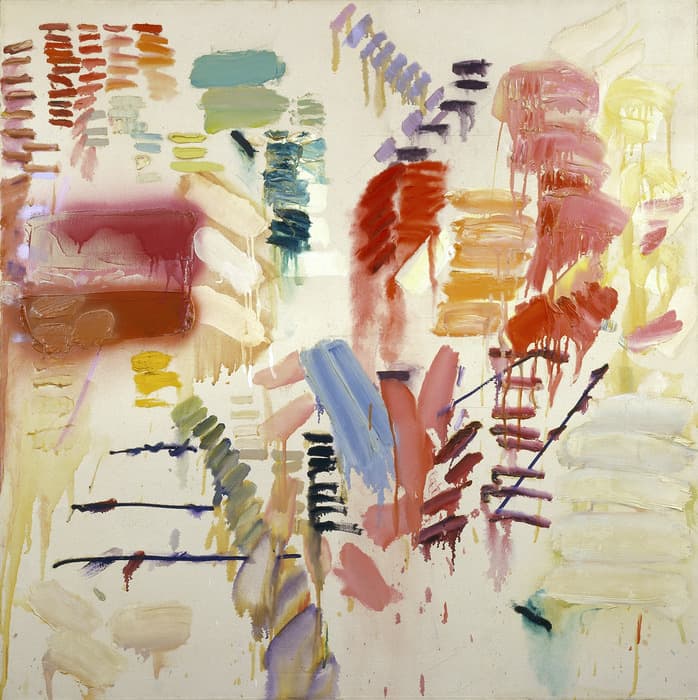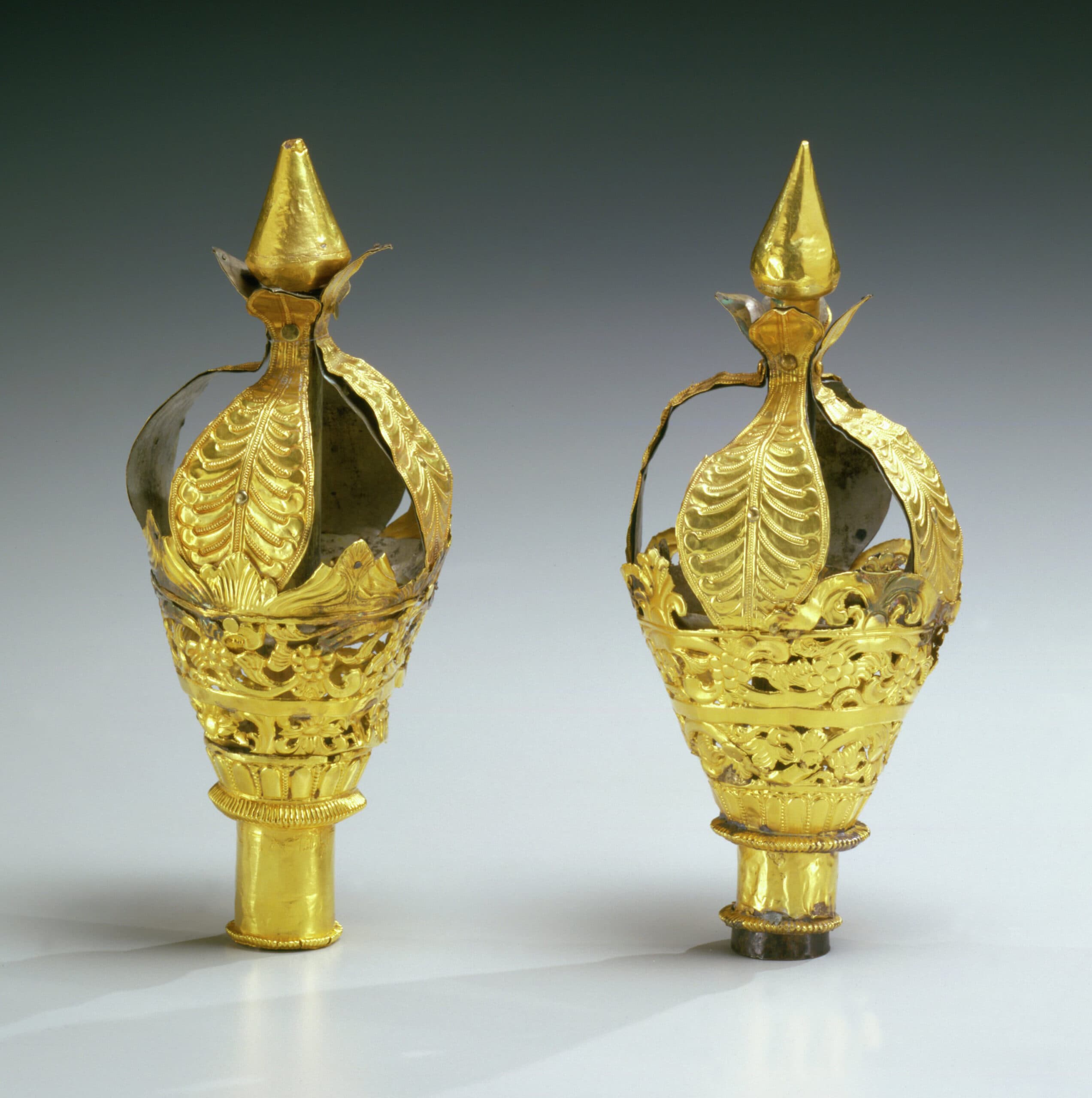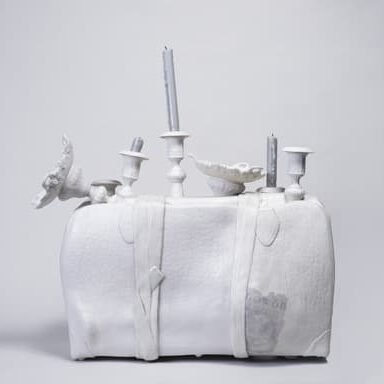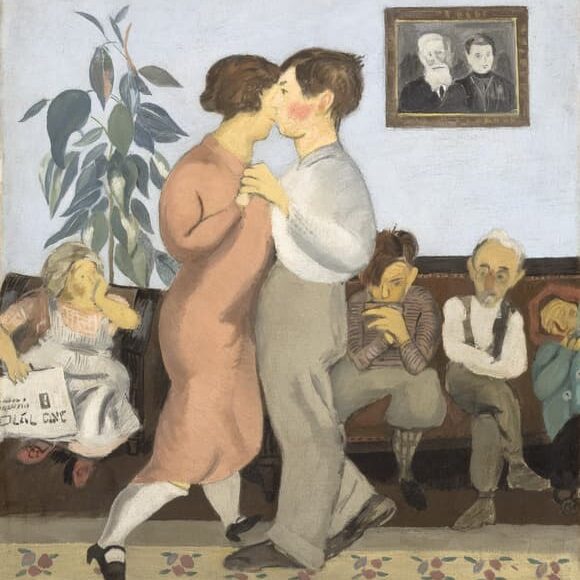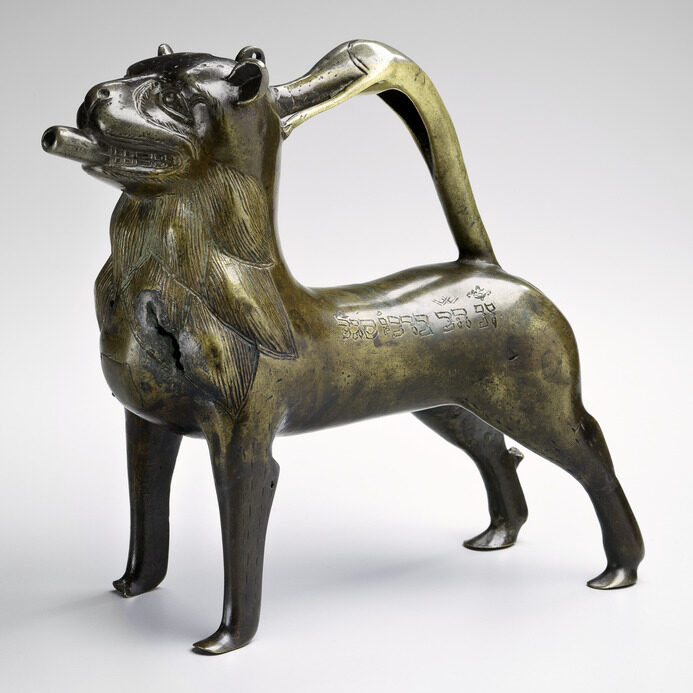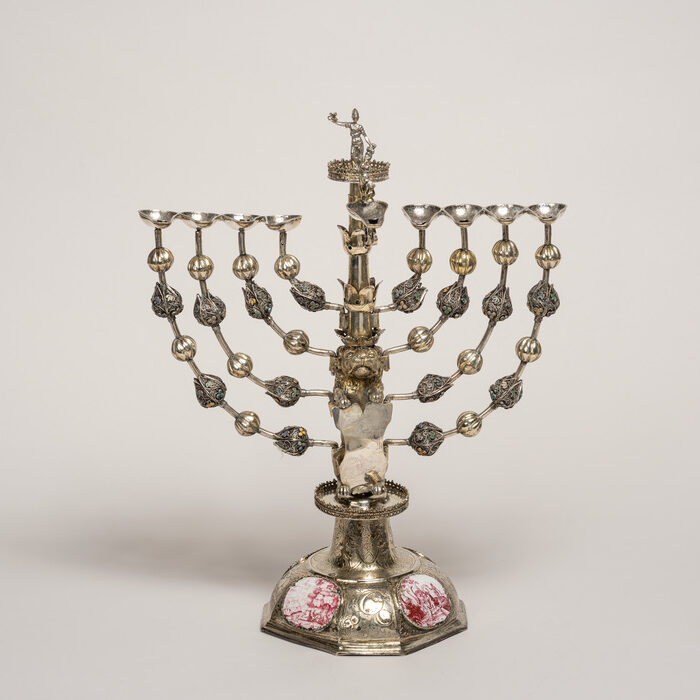Reimagined Third and Fourth Floor Opening
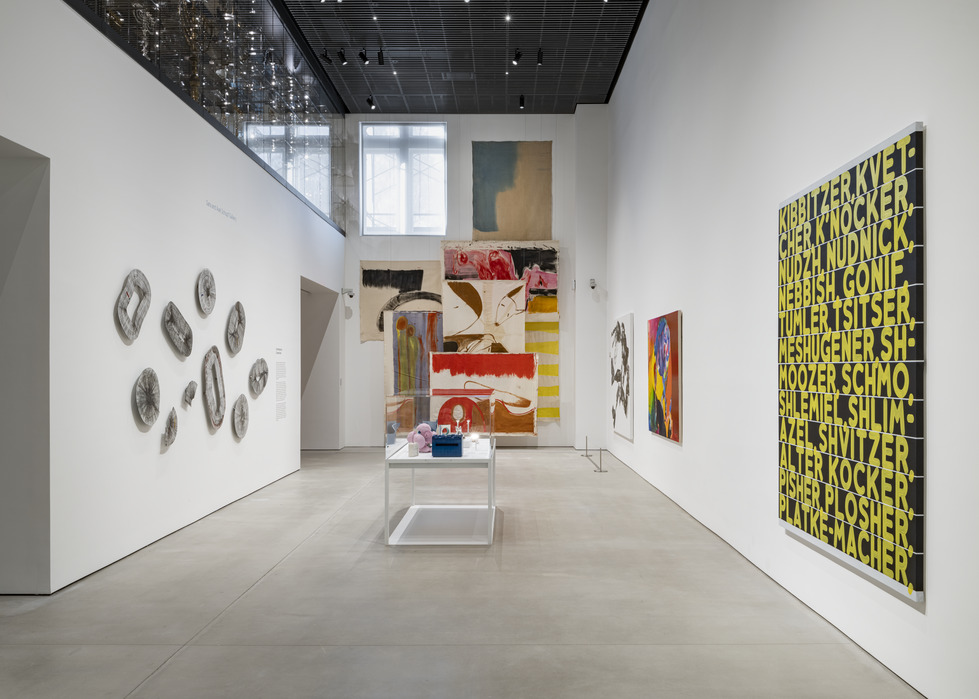
Installation view of "Identity, Culture, and Community: Stories from the Collection of the Jewish Museum" at the Jewish Museum. Photo by Kris Graves.
Reimagined Galleries Create Expanded Opportunities to Engage with the Museum’s Encyclopedic Holdings and Explore the Intersection of Art and Jewish Experience in the Global Diaspora.
New York, NY, May 19, 2025 (Updated October 3, 2025)—The Jewish Museum debuts its reinstalled and reimagined collection galleries and new learning center on October 24, 2025. Marking the most significant renewal to the Jewish Museum in over 30 years, the $14.5-million project encompasses half of the public space within the Museum’s historic Warburg Mansion and centers cultural exchange and discovery as defining elements of the visitor experience. Central to this transformation is the integration of galleries and education spaces open to all on the Museum’s fourth floor, and the debut of a new collection installation and narrative on the third floor, tracing themes that have defined Jewish experience and highlighting histories resonant with those of other cultures.
The architectural design of the project was developed by UNS (United Network Studio), Amsterdam, and New Affiliates Architecture, New York, with Method Design, New York, as Architect of Record.
Featuring more than 200 works, Identity, Culture, and Community: Stories from the Collection of the Jewish Museum unfolds across the Museum’s third floor in a thematic and chronologically integrated presentation of its unparalleled holdings. The installation design supports the display of art and objects of vastly varying scale and materiality, from delicate archaeological artifacts and Jewish ceremonial works to large-scale contemporary painting and sculpture. The Museum’s renewed and newly opened fourth floor features the Pruzan Family Center for Learning, where art and objects from the collection are displayed in gallery settings, adjacent to facilities for educational programming and hands-on artmaking. These two floors are joined visually by a renovated double-height gallery crowned by a dramatic, monumentally scaled installation of more than 130 Hanukkah lamps from around the world, and from antiquity to the present day, underscoring the central meaning of light as a symbol of enlightenment and hope across cultures.
“This milestone moment heralds a new chapter for the Jewish Museum. The Museum’s collections and programming have always been distinguished by their unique focus on the myriad manifestations of Jewish culture through the lens of art, offering powerful examples of cultural and artistic exchange. With this reimagining of our collection and education galleries, we hope visitors discover new points of connection and deepen their appreciation of the traditions that have shaped the Jewish experience throughout the global diaspora and in resonance with other cultures,” said James S. Snyder, Helen Goldsmith Menschel Director.
In conjunction with the reopening of its collection and education galleries, the Museum debuts two special exhibitions that further its mission to illuminate aspects of the Jewish experience through art: Anish Kapoor: Early Works, also opening on October 24, spotlights a period of remarkable invention for this internationally acknowledged artist, who descends from Hindu and Jewish Indian families; and, on December 12, Joan Semmel: In the Flesh, co-curated with this iconic figure of the modern feminist movement, places her work in dialogue with selections from the Museum’s collection.
About Identity, Culture, and Community: Stories from the Collection of the Jewish Museum
The Jewish Museum’s renovated collection galleries trace the rich history of migration, assimilation, and endurance that is the trademark of Jewish culture across the global diaspora through a new and expansive installation. Punctuated by a series of rotating focus exhibitions, Identity, Culture, and Community provides a thematic structure to reflect the diversity of Jewish experience through artworks and decorative objects, ranging from Ashkenazi, Sephardic, and Mizrahi ritual objects that are steeped in tradition, to large-scale painting and sculpture by boundary-pushing modern and contemporary artists, among them Mel Bochner, Nicole Eisenman, Eva Hesse, Lee Krasner, Louise Nevelson, Mark Rothko, Michal Rovner, Miriam Schapiro, and many others.
Organized in a loose chronology, this thematic installation begins with a display underscoring the historic importance of Torah and Jewish ritual as unifying symbols for Jewish communities. As visitors navigate the galleries, they experience works that reflect the migration of the Jewish people through the changing political, social, and cultural landscape of the global diaspora from antiquity through the 20th and 21st centuries. Subsequent chapters explore such themes as how art can serve as a repository of memory and an expression of identity in the face of forced migration and persecution; the visual vocabularies that emerged in post-World War II art and design; the role of women in Jewish culture and the impact of feminism on artistic output; and how Jewish identity and experience are being interpreted in contemporary art.
“Identity, Culture, and Community foregrounds the extraordinary vision, diversity, and experimentation of the artists it showcases, revealing a proliferation of artistic voices and influences, cross-cultural exchanges, and powerful narratives,” said Darsie Alexander, Senior Deputy Director and Susan and Elihu Rose Chief Curator. “Each work asserts a distinct history, conveying stories of the people who made, owned, and often saved these cherished objects. The Jewish Museum is the beneficiary of these great legacies, ensuring they are studied and preserved for generations to come.”
The Museum’s third floor also features a rotation of focused gallery installations that complement the central collection display, including an exhibition exploring themes of Jewish life in Colonial America, presented in celebration of the 250th anniversary of the Declaration of Independence; and an installation dedicated to the work of curator, author, and director Pearl Bowser (1931–2023), who played a major role in advancing cutting-edge movies through the series The Black Film, in 1970, highlighting the Jewish Museum’s long history in introducing new ideas and artists to New York audiences. Future installations in these galleries will rotate regularly to explore specific stories of people, objects, and places that amplify the Jewish cultural narrative and that connect to the moment.
Identity, Culture, and Community: Stories from the Collection of the Jewish Museum is curated by Darsie Alexander, Senior Deputy Director and Susan and Elihu Rose Chief Curator; Claudia Nahson, Morris and Eva Feld Senior Curator; Kristina Parsons, Leon Levy Assistant Curator; and Rebecca Frank, Curatorial Assistant.
About the Pruzan Family Center for Learning
The Jewish Museum’s transformed fourth floor features the Pruzan Family Center for Learning, a 7,000-square-foot space dedicated to learning and engagement that significantly enhance the Museum’s ability to serve its diverse audiences. The renovated floor, which had been largely closed to the public, incorporates both light-filled exhibition galleries, open to all, displaying over 200 works of fine art, ceremonial objects, artifacts, and decorative art from the Museum’s collection, as well as facilities for education and artmaking to serve the nearly 40,000 students and adults who enjoy education programs in the Museum each year.
“The new Pruzan Family Center for Learning provides visitors of all ages, backgrounds, and abilities with unique opportunities to learn from original works of art in the Museum’s collection,” said Nelly Silagy Benedek, Deputy Director, Education and Programs. “These spaces also offer a less formal setting for visitors to gather, relax, and engage in participatory moments, underscoring ways in which art and objects convey cultural histories across time and place in an environment that is intimate and that can build community.”
A central feature of the Pruzan Family Center for Learning is a floor-to-ceiling display of more than 130 Hanukkah lamps that overlooks the Museum’s renewed double-height gallery and the collection galleries below, creating a visual and symbolic link between the galleries devoted to telling stories and those engaged with teaching and learning. Drawn from the Museum’s world-renowned holdings of more than 1,000 lamps from diverse cultures, periods, and places, the installation powerfully represents the diasporic nature of the Jewish experience and represents the largest display of Hanukkah lamps the Jewish Museum has ever presented.
Other key installations include a gallery devoted to portrait and landscape painting, which invites visitors to consider how artists represent people and places to express concepts of identity, migration, acculturation, and assimilation. An objects gallery featuring ancient artifacts, ceremonial objects, and modern sculptural works completes the narrative arc of the Museum’s holdings by documenting the timeline of Jewish cultural creative-making from thousands of years ago to today.
Hands-on activities in the Center include a one-of-a-kind simulated archaeological dig for children, designed by Koko Architecture + Design, a touch wall exploring materials transformed by artists to create works of art, and two new art studios offering artmaking opportunities for participants of all ages. Finally, the floor features a new salon space, designed to support educational and social programming of all kinds and featuring a rotation of newly commissioned site-specific works, beginning with a mural by Brooklyn-based artist Talia Levitt.
Alongside the opening of Identity, Culture, and Community: Stories from the Collection of the Jewish Museum, a new suite of interpretive materials will be available within the Museum’s digital guide on Bloomberg Connects, the free arts and culture app. The four new audio guides feature works of art installed on both the renovated third and fourth floor spaces, including insights from museum curators, educators and artists. The focuses of the guides are: a highlights audio tour featuring 28 stops with curators and artists; a tour featuring 14 Hanukkah lamps from the new installation; 8 new audio stops focused on portraits and landscapes in the Pruzan Family Center for Education galleries; and a comprehensive guide of verbal descriptions designed to accompany the Touch Wall for visitors who are blind or have low vision. All audio materials include transcripts available on the Museum’s website and Bloomberg Connects. The Connects App is available for use on a personal smartphone or a free device to loan from the front desk. Download the free app.
Public and educational programs accompanying the reinstalled collection galleries and Center for Learning include a Family Day on November 16, as well as artist talks and art history classes. For more information visit the programs calendar.
Funding
Support for the renewal of the Jewish Museum’s transformed galleries has been made possible by the donors to the Museum’s 120th Anniversary Campaign.
About the Jewish Museum
The Jewish Museum explores the vibrancy of Jewish world culture through art. Located on New York City’s famed Museum Mile, in the landmarked Warburg Mansion, the Museum was the first institution of its kind in the United States and is among the oldest Jewish museums in the world. The Jewish Museum preserves a unique collection of more than 30,000 works of art, archaeology, and ceremonial objects, while presenting exhibitions that relate to the global Jewish experience over 3,500 years. Bridging past and present, the Jewish Museum explores cross-cultural influences and offers new insights into key narratives that shape the human experience.
Press contacts
Resnicow and Associates
Juliet Sorce / Laurie Kamens / Emma Frohardt / Joanna Yamakami
[email protected]
212.671.5178 / 212.671.5157 / 212.671.5164
The Jewish Museum
Anne Scher
[email protected]
212.423.3271
